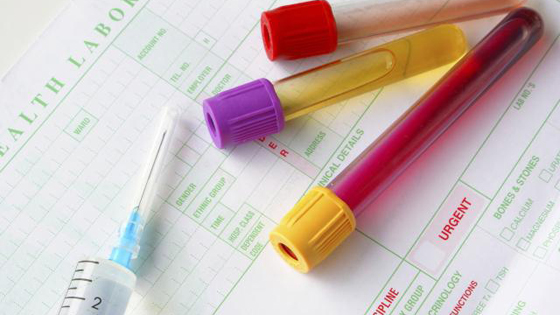
Every year, 980,000 units of blood are used in hospitals across the country. The Inter-hospital Blood Drive Challenge encourages people to donate blood. (Photo: Google Images)
Have you ever wondered what happens to your blood after you donate it? How is it tested? Where does it go? And who gets it?
Barbara Russell, a supervisor for Canadian Blood Services (CBS), has the answers. As the manager of a clinic that collects blood for GTA hospitals, she counts on campaigns like the upcoming Inter-hospital Blood Drive Challenge to get people through the door to donate.
How much blood does Canada need?
Every year, 980,000 units of blood are used in hospitals across the country. That's more than 2,300 units every day.
UHN alone used more than 33,000 units last year, enough to fill a backyard swimming pool. To treat one car crash victim, doctors require as much as 50 units – equivalent to five times the total amount of blood in one person.
On any given day, CBS knows exactly how many units of blood it has on hand, and how much it needs to collect. Normally, there is about a four day supply of all blood types on hand, but the summer is very difficult because fewer people donate on long weekends.
Work at the blood bank only begins after the needle comes out and the donor leaves. Russell says most people don't know how complicated it is to get blood from donors to patients quickly and safely.
Blood travel – from start to finish
There are two steps involved in getting blood from donors to recipients. First, blood clinics screen donors and collect the blood. Then, the blood is sent for testing, processing and distribution to hospitals.
Step one: Donation
Once the needle is placed in a donor's arm, it connects to a bag resting on a scale. The scale automatically stops the blood transfer as soon as the bag reaches 485 ml, which usually takes six to eight minutes. While the bag fills, the scale rocks it back and forth continuously, mixing it with an anticoagulant to keep the blood from clotting.
When the bag is full, a small vial is removed for testing, and both the bag and vial are given a barcode to identify which donor the blood came from.
"The barcode can be used to track every unit of blood from the time it leaves a donor's arm, to the time it enters the recipient's," said Russell. "This way, if there was ever an issue with the blood, we can quickly locate and remove it." This means that if a donor feels fine when they give blood but gets sick the next day, they can inform CBS and have the donation flagged.
After the blood is labelled, CBS volunteers transfer the bag to a small cooler about the size of a case of pop. The cooler also contains a thermometer that monitors the temperature from when the blood goes in until it comes out. Once the blood arrives at CBS's production facility, the temperature in the cooler must have dropped for the blood to be usable.
When the clinic closes for the day, FedEx picks up the coolers and transports them to the Brampton production facility which services Toronto, Hamilton and London.

Canadian Blood Services' massive Brampton processing facility (shown here) where blood goes for processing and distribution to hospitals across central Ontario. (Photo: Canadian Blood Services)
Step two: Processing
In Toronto, all donations are sent to CBS's new Brampton production facility. Opened in 2011, the 127,000 sq. ft. facility is 20 per cent larger than an average Wal-Mart supercentre, and replaces production and distribution facilities in Toronto, Hamilton and London.
On an average day, the facility's 400 staff members supply 1600 units of blood to hospitals across the GTA. Its location near the airport makes it possible to quickly ship rare blood products all across the country to wherever they are needed.
After it arrives, the blood is placed into a centrifuge, which spins the blood at high-speed to separate it into its three components: red cells, platelets and plasma.
While the blood is being processed, a small sample gets tested for diseases transmitted through the blood like AIDS, hepatitis and West Nile Virus to make sure it is safe.
The processed red blood cells are then sorted by blood group (A, AB, B and O) and ready to ship to hospitals.
How you can help:
Call 1-888-2-DONATE and make an appointment at your nearest blood clinic.
